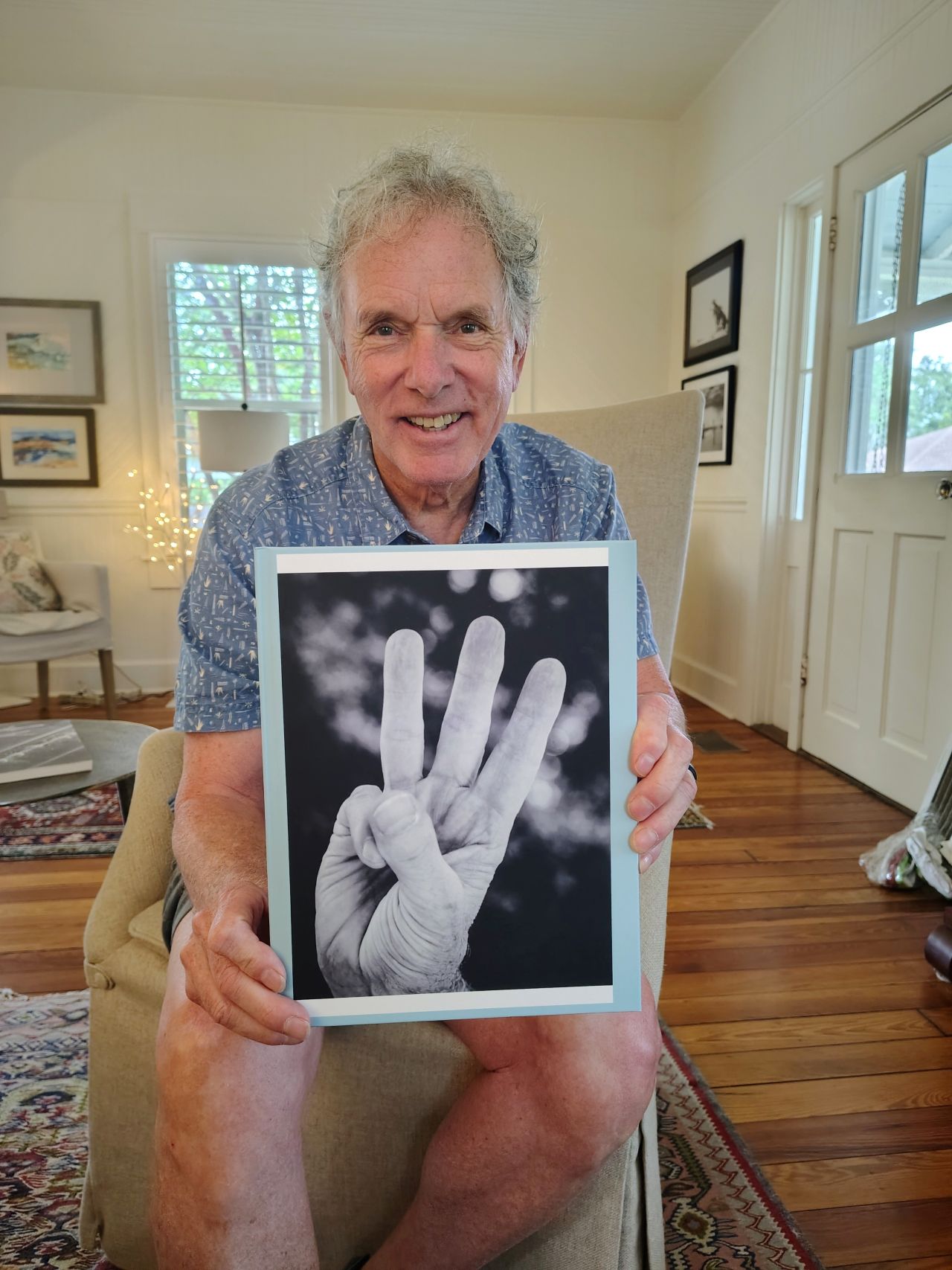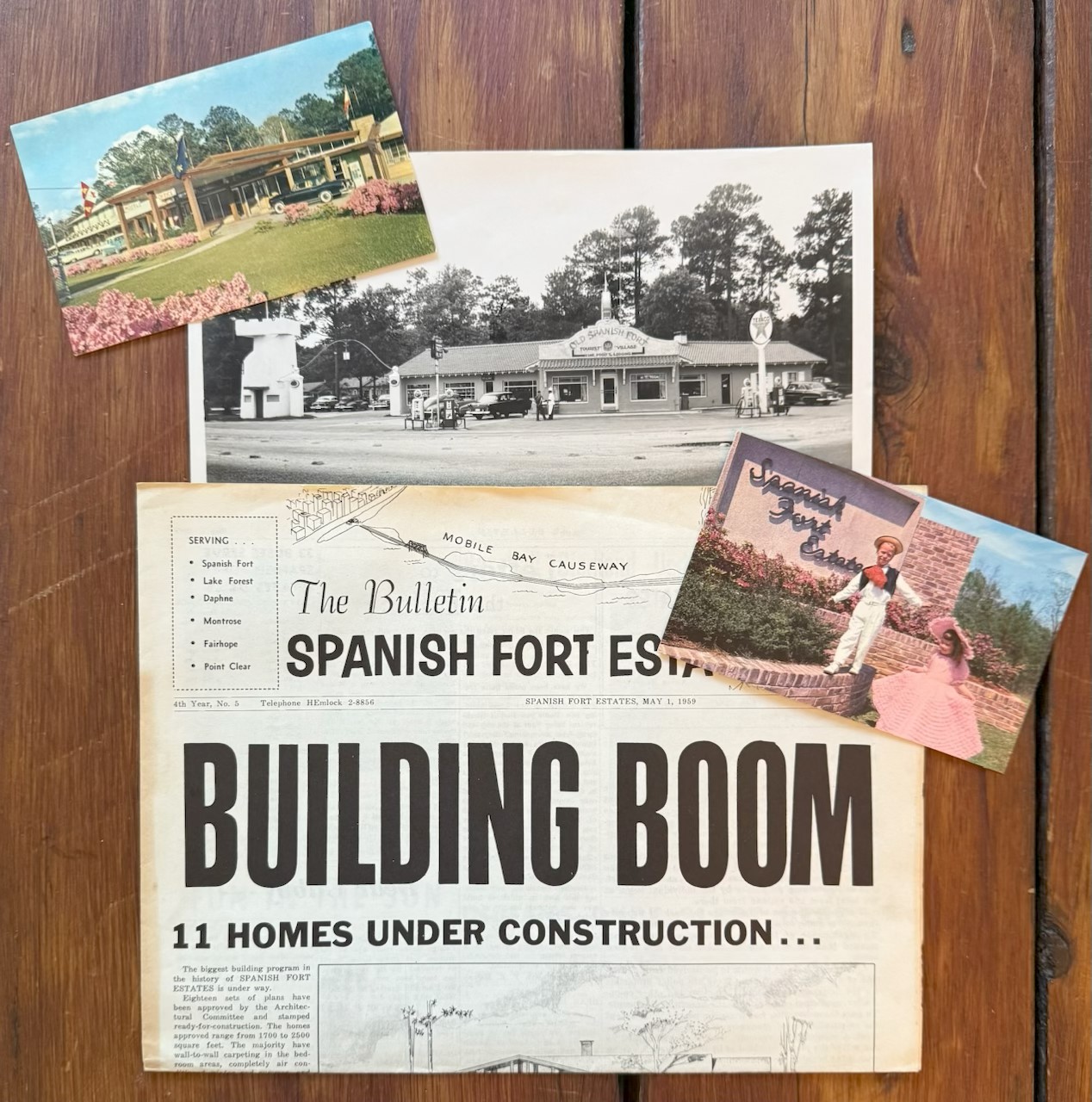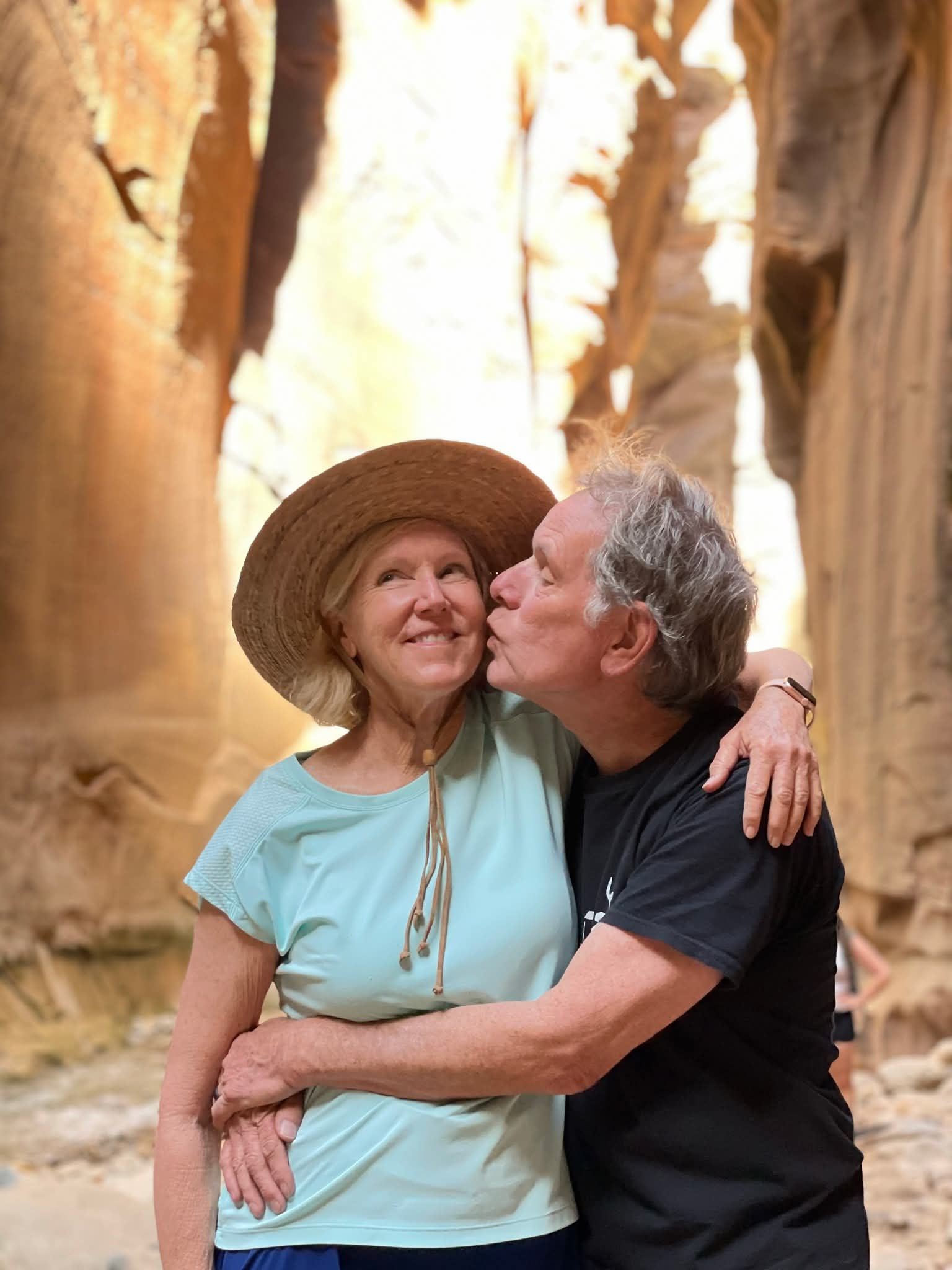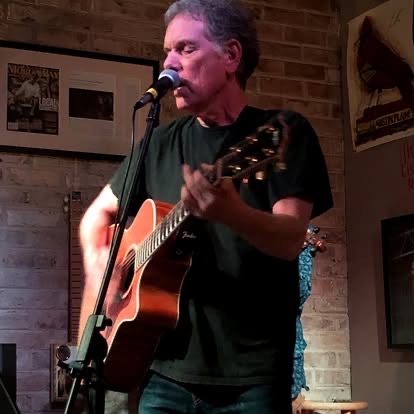
George Fuller III is one of Fairhope's true creative spirits, but you can't tell his story without heading up the road to Spanish Fort.
Though George has lived much of his life in Fairhope, you can trace his formative roots about 12 miles to the north, which is the site of his enterprising family's lasting legacy. His father and grandfather were instrumental in building Spanish Fort as a community, and he looks back fondly on growing up in the tight-knit town.

His grandfather, George Fuller Sr., had been a successful broker in Chicago until the stock market crashed in 1929. Not long after, his grandmother inherited some money, and they used it to buy around 3,000 acres directly across the bay from Mobile. The first order of business was to build the Old Spanish Fort Tourist Village, which included a gas station, motel, and cottages.
"The Causeway had opened just a few years earlier (in 1926), so at that intersection you had three major arteries: Highway 31 from the north connecting with Highway 90 and Highway 98," says George. "This was in the days before air travel was commonplace, so the motel was extremely popular. All kinds of famous people came through, including lots of TV celebrities."
Thematically, the business drew tourists in by capitalizing on several aspects of the local history. French colonists had established a trading post on the bluff in 1712, and Spanish forces defended themselves against the British there in 1781. It was also the site of one of the last battles of the Civil War.
In the 1950s, George Fuller Sr. updated and expanded the family ventures with a newer and larger motel and restaurant. They are all gone now, and today that ground is occupied by shopping centers that include a Walgreens, a Piggly Wiggly, and a Tyndall Family Credit Union branch. Later, George Jr. and his brother, David Fuller, started selling lots for a new subdivision called Spanish Fort Estates.
To find out more about George III's early life, we drove up U.S. 98 from Fairhope. When we reached the highest point, he gestured toward a fenced-in lot overlooking the Causeway and the Blakeley River. It's on Patrician Drive, which was named for his grandmother, and it's near a triangular green space that's now called Fuller Memorial Park.
"Ours was the third house that was built," he says. Sadly, it's no longer there, either. After the Fullers had moved away, a drainage issue developed on the lot, and the house was razed to prevent it from sliding off the hill.
But many strong memories remain. Many of them involve the motel and restaurant, and the swimming pool that was the center of community activity in the summers because it was also open to neighborhood residents who bought memberships.
"It was a big and successful family business for many years until the Bayway opened (in 1978), and all that traffic bypassed Spanish Fort," says George. "The change was dramatic. It was like, 'Whoa, where did everybody go?'"
Rather than following any family footsteps into the tourist trade, the third George took a different path, one that's been highly creative in various ways. There were no schools in Spanish Fort back then, so he attended Daphne Junior High from first through ninth grade and then Fairhope High School. After graduating in 1968, at the height of the Vietnam War, he enrolled at the University of Alabama.
He studied journalism, in part because his father had been a radio broadcaster and also produced a Spanish Fort periodical called The Bulletin. He earned his master's degree in 1976 and set out for a succession of newspaper jobs that included stints in Monroeville, Mobile, and Fairhope before he moved into the field of advertising.
.jpg)
He worked for different agencies in Mobile before finding work in many other places, including New Orleans, Birmingham, and Tampa, Fla. That's where he settled in as an associate creative director at a busy firm called WestWayne, whose long list of clients included the Publix supermarket chain.
By his side for these adventures was his wife, the former Frances Tucker, who has retired after a career as a nurse practitioner. She grew up in the Spring Hill area of Mobile, and her family also had a place in Point Clear. They tied the knot on a memorable day 46 years ago.

"We got married in 1979, two weeks after Hurricane Frederic. We had a little garden wedding in her parents' backyard in Mobile," he says. "Everybody sat on felled trees and got pine sap all over them. It was a mess. Our friends who came to the wedding remember it so vividly because it was like the first party after that horrible hurricane."
George and Frances lived in Fairhope together early in their marriage, and returned in 2015 once their two children, Jake and Annie, had grown and moved out of the family home in Tampa. For a couple of years starting in 2017, he served as editor of Portico Eastern Shore magazine. They have also made time to travel extensively.
After decades together, George speaks warmly of his wife with affection and admiration.
"She leads by example, and she's the kind of person I wish I could be," he says. "I'm very fortunate to wake up in the morning and realize I'm having coffee with this person I want to exemplify."
Something else that's an essential part of George's life is music. He started playing guitar in the early '60s and has written around 80 songs.

"It's hugely important to me," he replies when asked directly. "I learned to play the guitar and sing because I was so shy, and it would give me something to do at parties. When the Beatles were on The Ed Sullivan Show, I already knew enough chords that, the next day, we could go out and form a band. We were The Impacts — "music for the in-crowd" — and we were so bad."
He's performed locally over the years at places like Winslow's and Saratoga Trunk, sometimes with a "punk bluegrass" group called Skunk Posey. More recently, he's released two full-length albums of his own songs, which are available on the Spotify streaming service, and has also done a lot of recording at home. Many of those songs are available on the Soundcloud music platform.
George tends to downplay his musical achievements, but he has enough pride in his work to have had a book of his lyrics published. The cover features an image of his own hand with three fingers extended, which has a double meaning. First off, it signifies his identity as George III, and it's also the salute he used as a Boy Scout in Spanish Fort.
"It reminds me to do a good turn daily," he says. "I try to do something every day that helps others without expecting anything in return."
He seems like a guy who wouldn't need such a reminder, but that's one of the many things he learned growing up in a place that he almost doesn't recognize today. As Spanish Fort has prospered into a small city of nearly 12,000 people, there are fewer physical reminders of his early life.
There are some, though, like the other houses in the old neighborhood and the park where they'd gather for block parties, which now carry his family name. And some of the newer construction in town — like the high school and the Community Center, which houses the library and city hall — has a familiar look. The buildings share elements of the same Spanish mission-style architecture that his grandfather figured would help to attract motorists coming through off the Causeway nearly a century ago.
























